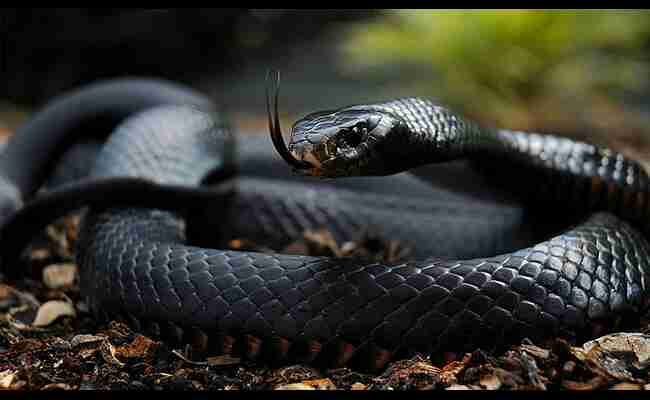Black Mambas Facts, Diet, Behavior, And Types 2023 Best Info is our today’s topic. These snakes are a remarkable species of venomous snake in sub-Saharan Africa, renowned for their impressive length and potent venom. This article will explore the intriguing world of black mambas, dispelling some common misconceptions and shedding light on their behavior, habitat, and interactions with humans.
Black Mambas Facts, Diet, Behavior, And Types 2023 Best Info

| Black Mamba Scientific Classification | Black Mamba Locations | Black Mamba Conservation Status | |
Kingdom | Animalia |
| Least Concern |
Phylum | Chordata | ||
Class | Reptilia | ||
Order | Squamata | ||
Family | Elapidae | ||
Genus | Dendroaspis | ||
Scientific Name | D. polylepis | ||
The Venomous Reputation:
These snakes are often considered the most dangerous globally due to their venom. Just a tiny amount, around 15-20 mg, can be lethal to humans. They can inject up to 280 mg of poison in a single strike. However, their reputation for aggression is somewhat exaggerated; they tend to be shy and only become aggressive when threatened.
Don’t Miss:
Diet and Behavior:
These diurnal hunters primarily target mammals but are opportunistic feeders, consuming birds and occasionally other snakes. Unlike constrictors, black mambas bite and release their prey, waiting until it succumbs to the venom before consuming it. They are highly efficient hunters.
Habitat and Distribution:
Black mambas exhibit adaptability in their habitat choices, thriving in light woodlands, rocky outcrops, semi-arid savannas, lowland forests, and moist savannas. They tend to return to the same den unless disturbed.
Types of Mambas:
While black mambas are the most famous, there are other mamba species, including the Eastern green mamba, Western green mamba, and Jameson’s mamba, each with unique characteristics and habitats.
Evolutionary Adaptations:
Black mambas have evolved several traits that aid their survival, such as a keen sense of smell and taste for locating prey and detecting potential threats. They also possess a hood structure, which, when flared, makes them appear more prominent to intimidate predators or threats. Their fixed fangs allow them to deliver potent venom without injuring themselves.
Population and Conservation:
Fortunately, black mambas are not currently endangered. Their vast range across sub-Saharan Africa has earned them a “Least Concern” status on the IUCN Red List. However, their biggest threat remains human fear, leading to unnecessary killings.
Identification and Appearance:
Black mambas are long and slender with coffin-shaped heads. They vary in color from olive to grayish-black, with distinctive dark mouths, earning them their name. Their size can reach up to 14 feet, making them the second-longest venomous snake globally.
Venom and Danger:
Black mambas possess one of the deadliest venom cocktails among snakes, primarily composed of neurotoxins. Their bites lead to rapid symptom onset, with severe consequences if left untreated. It typically requires multiple vials of antivenom to treat a taste.
Behavior Towards Humans:
Contrary to their aggressive reputation, black mambas are more likely to flee or hide than confront humans. They may hiss, raise their bodies, and spread a thin hood when cornered, but they generally prefer to escape rather than engage in a confrontation.
Conclusion:
Black mambas are genuinely captivating creatures of the African wilderness. While their venom is incredibly potent, their reputation for aggression is somewhat overstated. These snakes play a vital role in their ecosystems, and understanding their behavior and characteristics can help foster coexistence with these remarkable animals. I hope you enjoy reading our article Black Mambas Facts, Diet, Behavior, And Types 2023 Best Info.


